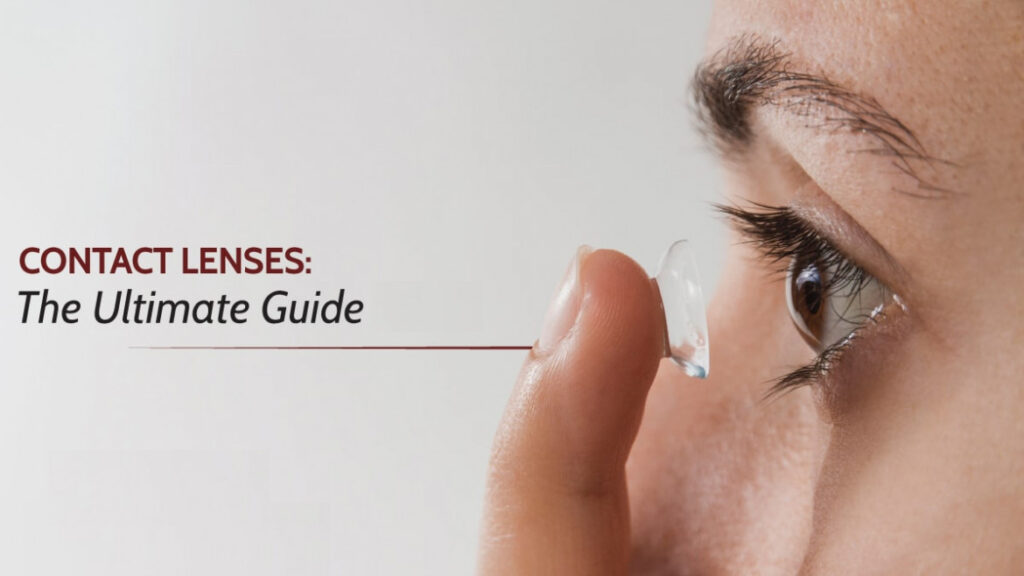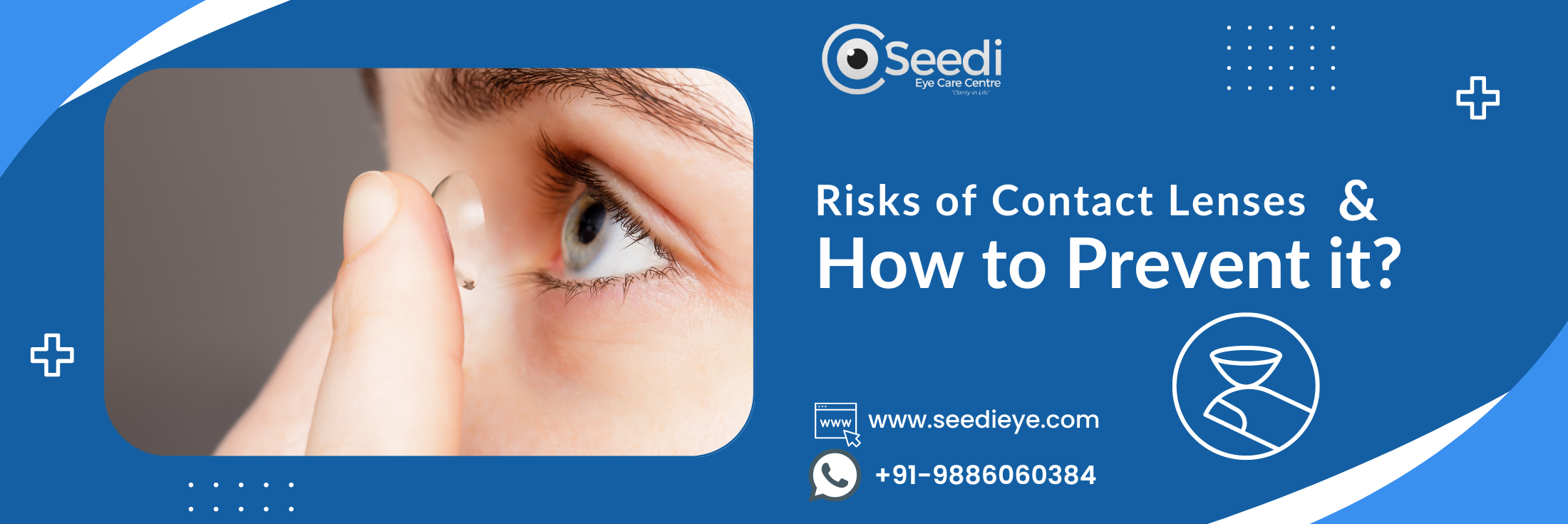A Complete Guide on Wearing Contact Lenses
Contact lenses are thin, clear lenses placed on the cornea to improve vision. Like glasses, they correct vision, but they are lightweight and almost invisible. Some are even colored to alter the appearance of the eye, giving a fresh look. If you’re curious about how contact lenses work and the different options available, here’s a complete guide for you to help to understand them better way.
Types of Contact Lenses
Contact lenses comes in various types, each suitable for different needs and preferences:
- Soft Lenses: The most commonly prescribed, soft lenses are flexible and comfortable.
- Hard Lenses (Gas-Permeable): More rigid than soft lenses, these are better for certain conditions like astigmatism or allergies.
Soft lenses include:
-
- Daily Disposable: Worn for one day and then discarded.
- Extended-Wear Disposable: Can be worn for up to a month before replacing.
- Toric Lenses: For those with astigmatism.
- Bifocal Lenses: Correct both near-sightedness and farsightedness.
Advantages of Wearing Contact Lenses
- Wide Field of Vision: Provides sharper peripheral vision compared to glasses.
- Natural Eye Vision: No obstructions like frames.
- Suitable for Sports and Outdoor Activities: Contacts don’t fog up or get in the way.
- Weather Friendly: Unlike glasses, they don’t steam up or slip in humid conditions.
- Eye Conditions: Recommended for certain eye conditions like keratoconus and severe dry eyes.
- Color Customization: Color lenses can change your eye color.
How to Insert Contact Lenses?
Putting in your contacts takes practice, but with these steps, you’ll get the hang of it:
- Wash your hands and dry them with a lint-free towel.
- Open your contact lens case, keeping the other eye closed to avoid mixing lenses.
- Use your fingertips (not nails) to handle the lens.
- Place the lens on the tip of your finger and check for damage or that it’s right-side up.
- Hold your upper and lower eyelids open, look forward or up, and gently place the lens in your eye.
- Close your eyes and let the lens settle into place.
How to Remove Contact Lenses?
Removing contacts is easy if done correctly:
- Wash and dry your hands.
- Hold your eyelids open with your fingers.
- Pinch the lens between your thumb and index finger to remove it.
Why You Need to See an Eye Doctor?
Before wearing contact lenses, schedule a visit with an eye care hospital like Seedi Eye Care Centre to get more details on contact lenses. Contact lenses are medical devices and must be properly fitted to avoid eye damage. Whether for vision correction or aesthetic purposes, only a eye doctor or eye surgeon can provide the right prescription.
Can Anyone Wear Contact Lenses?
Most people can wear contacts, but some conditions, like repeated eye infections, severe allergies, or exposure to excessive dust, may make them unsuitable.
Risks of Wearing Contact Lenses
Improper care can lead to problems like discomfort, eye infections, or vision changes. Always follow your eye doctor’s care instructions and seek help if you experience any issues.
How to Care for Contact Lenses?
Care and cleaning depend on the type of lenses you use. Always use sterile solutions and follow the recommended cleaning and disinfecting routines.
When to Replace Contact Lenses?
Most soft contact lenses should be replaced according to a schedule (daily, fortnightly, monthly, etc.). Hard lenses might last longer, but always follow your eye care provider’s advice.
Dos and Don’ts of Wearing Contact Lenses
Dos:
- Keep hands clean.
- Clean lenses and case regularly.
- Replace lenses as advised.
- Trim fingernails for safer handling.
Don’ts:
- Don’t bathe or swim with lenses on.
- Don’t sleep with contacts unless they’re designed for extended wear.
- Don’t ignore warning signs like discomfort or redness.
Conclusion
Contact lenses are a multi-purpose option for both vision correction and cosmetic purposes. They are easy to use, comfortable, and come in various types to fit different needs. Whether you want clear vision or a new eye color, contact lenses can be a great solution—just make sure to choose the right type for your eyes and care for them properly. If you have any enquiries, please contact our Seedi Eye Hospital for more details.





